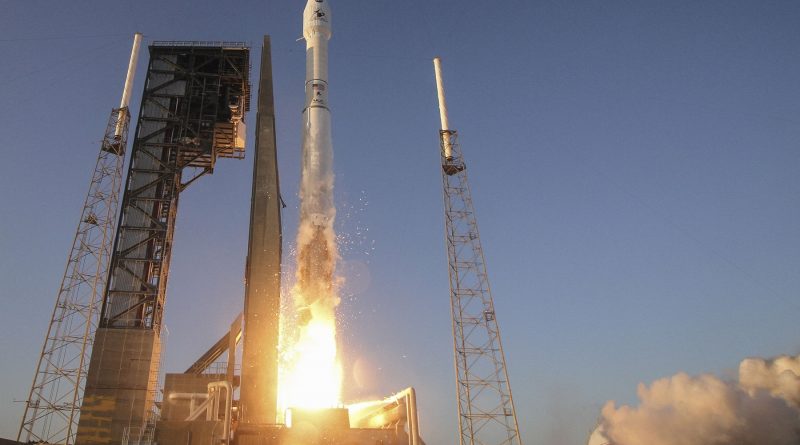Atlas V successfully sends NASA’s OSIRIS-REx on a Mission to Touch an Asteroid
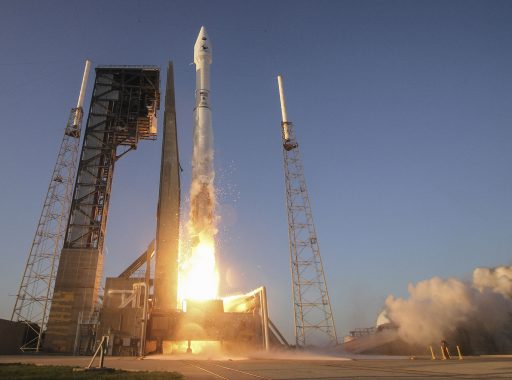
NASA’s OSIRIS-REx Asteroid Explorer took the first leap in a long journey through the solar system on Thursday, lifting off from Cape Canaveral atop an Atlas V rocket on a long-awaited mission to touch an asteroid to answer the long standing question on the origins life.
Rumbling off on time at 23:05 UTC under the loud thunder of its Russian-built rocket engine and lone booster, Atlas V first lifted the spacecraft into a Parking Orbit around Earth before firing its upper stage again to place OSIRIS-REx on a path escaping the grasp of Earth’s gravity at a blazing speed. The spacecraft separated from the carrier rocket one hour after launch and appeared healthy during its first steps in space.
The OSIRIS-REx mission sets out to link up with Asteroid Bennu, a dark, unexplored world roaming the Inner Solar System in an orbit taking it close to Earth every six years. This makes the 500-meter asteroid one of the more accessible bodies for a mission like OSIRIS-REx but also puts Bennu in the category of potential Earth impactors that could hit the planet at a future date.
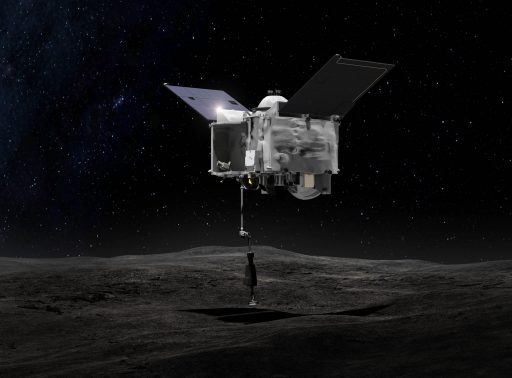
Asteroids are often likened to time capsules from the early beginnings of the solar system, having not undergone significant alteration since the early stages of planetary formation. Therefore, carbon-rich asteroids like Bennu are considered a scientific treasure trove that could hold the answer to the question how the building blocks of life were delivered to Earth to permit life to develop.
Collecting a sample from the asteroid’s surface and returning it to Earth for laboratory tests will enable scientists to look back to the very dawn of the Solar System and help understand the original inventory of organics present in this early stadium, feeding into processes that led to life and the habitability of planet Earth.
Sample return missions have the advantage of utilizing state-of-the-art laboratories for very precise analysis that can not be duplicated by any spacecraft instrument.
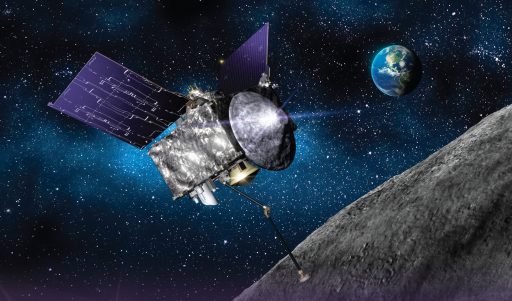
Carbon-rich asteroids have been identified as the likely candidates that delivered prebiotic compounds to Earth, organic molecules that became essential in the formation of life. Studying these processes will broaden our understanding of why we are here and how likely it is that these processes also led to the formation of life elsewhere in the Solar System and even throughout the universe.
Outfitted with five remote-sensing instruments and a three-meter long arm with a high-fidelity sampling device on its tip, OSIRIS-REx is set for a long journey to Bennu and back. The 2,100-Kilogram spacecraft will make one lap around the sun to use Earth’s gravity in September 2017 to bend its flight path to Bennu for arrival in August 2018 when the asteroid will first show up in the craft’s telescopic camera.
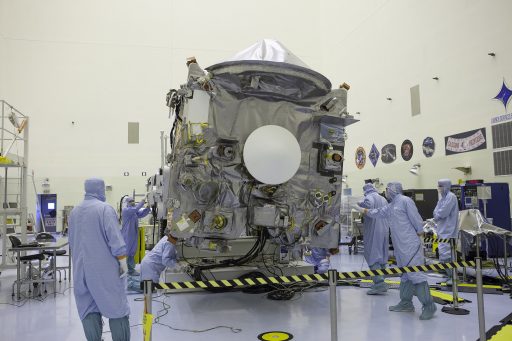
Arriving in the direct neighborhood of Bennu, OSIRIS-REx starts a close survey of the foreign world in October 2018 to obtain a complete picture of the asteroid’s surface features and composition. This information will also feed into the selection of the sampling site ahead of a series of rehearsals for the mission’s main event simply referred to as TAG – Touch And Go.
The TAG maneuver, scheduled some time in 2020 depending on mission progress, will require OSIRIS-REx to carefully approach the asteroid’s surface, place its sampler flat onto the regolith and fire a Nitrogen cartridge to create a gas flow that directs dust and gravel into the sample collection device before quickly departing the vicinity of Bennu again.
With the sample placed in a pristine return capsule, OSIRIS-REx is scheduled to boost itself back toward Earth in 2021 ahead of a September 2023 landing of the Sample Return Capsule to mark the delivery of America’s first asteroid sample.
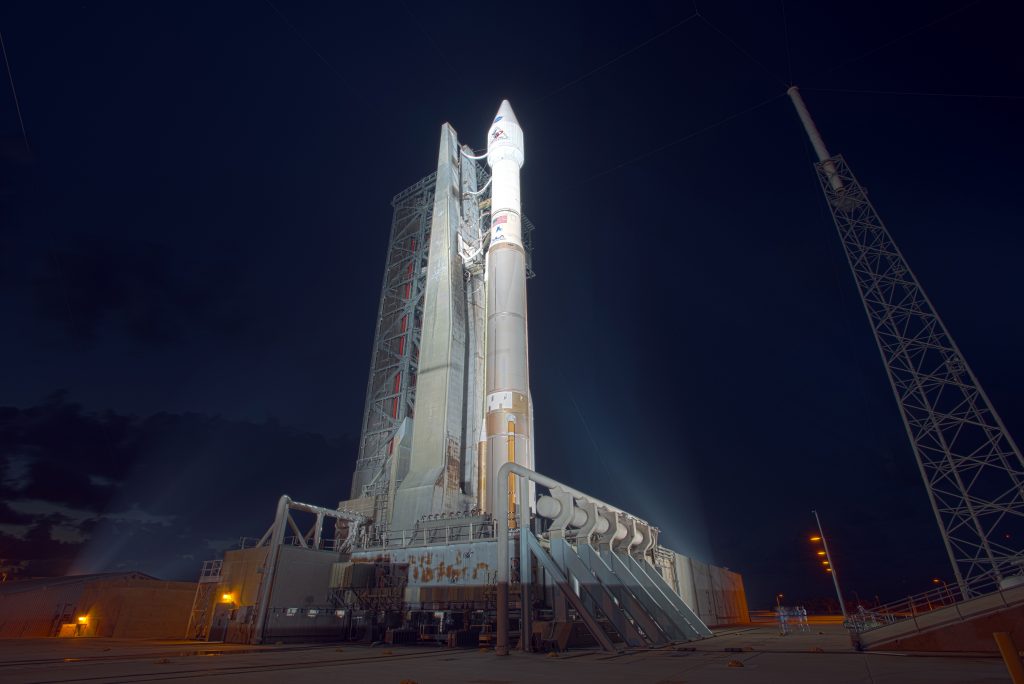
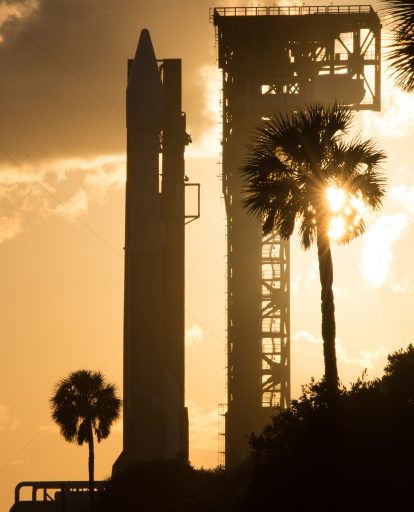
Thursday’s launch marked the closure of a big chapter in the mission, taking 12 years from initial conceptualization at the University of Arizona to the spacecraft departing Earth on its long-distance round trip.
OSIRIS-REx, flown as part of NASA’s New Frontiers program, has been a role model for other missions up to this point – coming to the launch pad on time and significantly under budget, an absolute rarity in the complex field of interplanetary missions.
The 58-meter tall Atlas V rocket rolled to the launch pad at Space Launch Complex 41 on Wednesday to be loaded with Kerosene fuel and undergo a series of preparations for Thursday’s countdown.
The countdown to the 111th United Launch Alliance mission and the 65th Atlas V launch started at 16:15 UTC when controllers at the Atlas Spaceflight Operations Center began the process of activating the Atlas V rocket for a multi-hour testing campaign.
Engineers departed the launch complex three hours prior to the opening of the day’s launch window and Atlas V entered cryogenic tanking when the countdown resumed after a built-in hold at T-2 hours that allowed the necessary polls to be performed prior to the hazardous fueling operation. With 94,600 liters of Rocket Propellant 1 already loaded into the first stage, only cryogenic propellants needed to be tanked during the countdown plus Helium to act as pressurization gas.
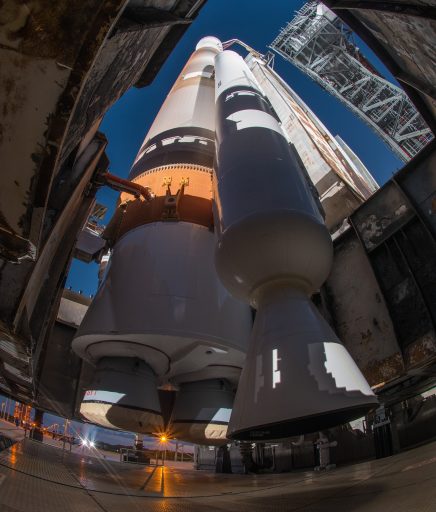
Over the course of a 90-minute sequence, Atlas V’s first stage received 185,500 liters of -183°C Liquid Oxygen while the trusted Centaur Upper Stage was filled with 15,700 liters of the oxidizer and 48,100 liters of Liquid Hydrogen stored at -253°C. Tanking was by the book and teams put the rocket through one last checkout before the opening of the day’s launch window approached.
The spacecraft team reported a GO to the Atlas V control room after OSIRIS-REx had transferred to battery power. All Atlas V launch controllers called out a GO for launch and the countdown was switched to automatic mode at the T-4-minute mark to put the rocket through a highly choreographed series of steps to get ready for ignition.
For its ride into space, OSIRIS-REx employed a truly strange-looking rocket. Designated Atlas V 411, the rocket’s appearance always causes discussion focused on the use of a single solid rocket booster, giving the appearance of an unbalanced vehicle when lifting off from its launch pad.
The Russian-built RD-180 main engine roared to life three seconds before clocks hit zero to throttle up to a liftoff thrust of 392 metric-ton force. Atlas V rose from its launch pad upon ignition of its Solid Rocket Booster at 23:05:00 UTC – the opening of the day’s launch window.
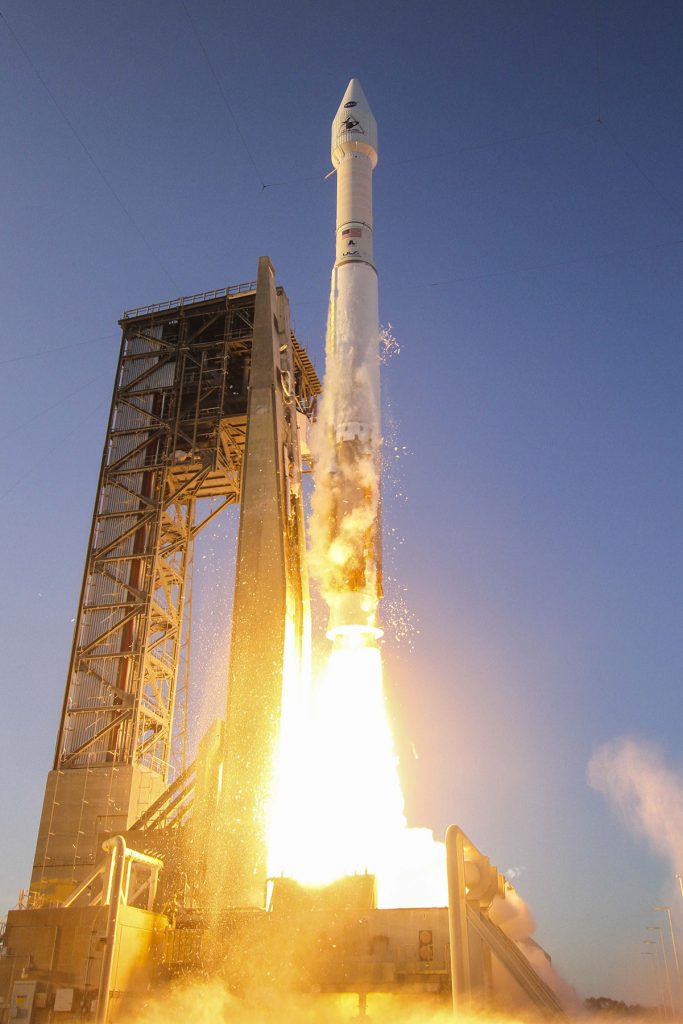
Climbing with a total thrust of 564.5 metric-ton force, Atlas V ascended vertically for just seven seconds before beginning its roll and pitch maneuver to get aligned with its 89-degree launch azimuth taking the vehicle to the south east. The two-chamber RD-180 switched to active propellant utilization and, throughout the early portion of the flight, was tasked with compensating the off-axis thrust from the booster.
Flying right and true, Atlas V passed the speed of sound just 56 seconds after launch followed moments later by Maximum Dynamic Pressure. Thrust on the lone Aerojet Rocketdyne booster tailed off 94 seconds into the flight when it exhausted its 41,000-Kilogram supply of solid propellant. To ensure the booster would make a safe off-shore impact, Atlas V held the 17-meter long SRB until T+2 minutes and 19 seconds.
Heading on powered by the RD-180 alone, Atlas V switched to active guidance to process navigation data in order to modify its flight profile to meet the precise cutoff targets. Burning 1,150 Kilograms of propellant per second, RD-180 delivered a thrust of 422 metric-ton force when flying through the rarefied upper layers of the atmosphere.
BECO, Booster Engine Cutoff, was marked at T+4 minutes and 3 seconds and the spent Common Core Booster separated six seconds later, pulling away by firing retrorockets. Ten seconds after staging, the Centaur ignited its 10,100-Kilogram RL-10A-4-2 engine to boost the stack into a Parking Orbit.
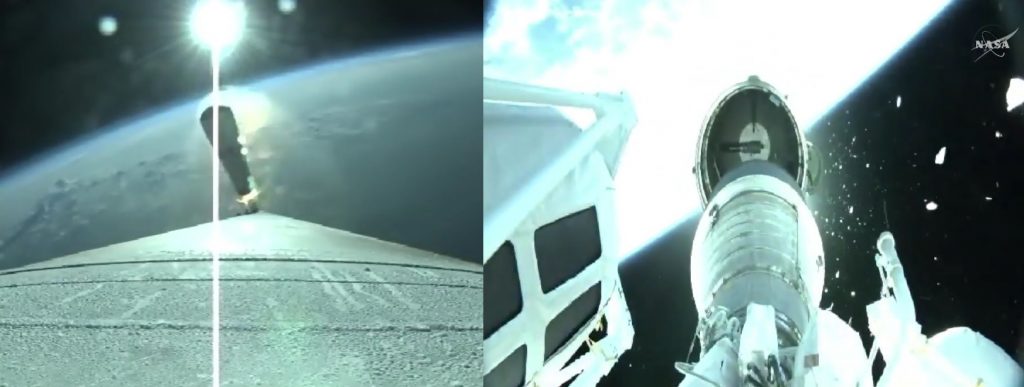
The 12.7-meter Centaur used an older make of the RL-10 on Thursday instead of the RL-10C with simplified design and different performance characteristics that made its debut in 2014. At the signing of the OSIRIS-REx launch contract in August 2013, Atlas V exclusively flew with RL-10A which it will continue using for future missions of the DEC, Dual Engine Centaur, and the single-engine version whenever its specific performance properties are required.
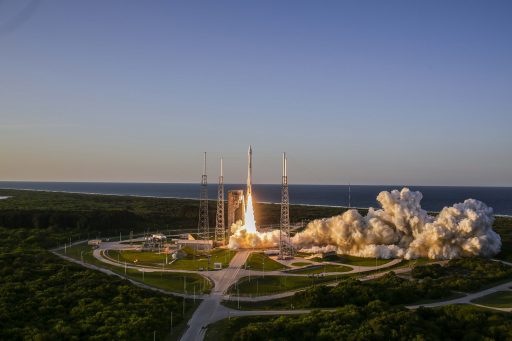
The liftoff at the very top of the launch window required Center to adjust its flight azimuth through its RAAN-steering capability.
Sticking to its south-easterly heading, Centaur fired its engine for eight and a half minutes, pushing the stack into an orbit of 165 by 272 Kilometers, inclined 26.95 degrees. Next was a coast phase of 21 minutes during which Centaur & OSIRIS-REx passed over Sub-Saharan Africa & the island of Madagascar – waiting to arrive at the proper position for the heliocentric injection.
Centaur’s critical engine re-start came at T+37 minutes and 20 seconds and RL-10A reached its full thrust to accomplish the interplanetary insertion. OSIRIS-REx was aiming for a characteristic energy of 29.3km²/s², leaving Earth’s gravitational influence behind at a departure speed of 5.4 Kilometers per second and heading into a targeted solar orbit of 0.77 by 1.17 Astronomical Units.
The second burn was just under seven minutes in duration and, based on Centaur’s navigation system, placed the stack onto a very precise trajectory. Following the completion of propulsive flight, Centaur went through a series of maneuvers to properly position OSIRIS-REx for separation from the carrier rocket.
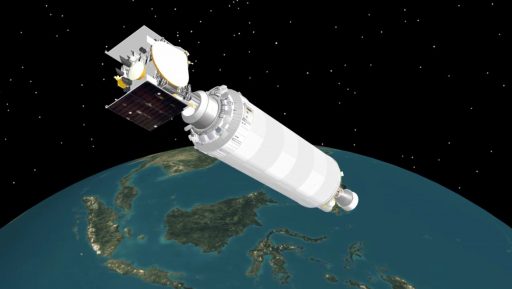
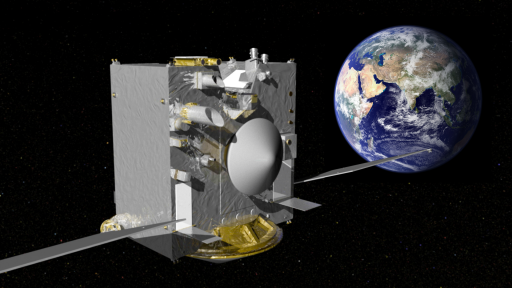
Spacecraft Separation was confirmed 59 minutes after liftoff (0:04 UTC) as OSIRIS-REx was gently pushed away from Centaur to mark the beginning of its seven-year journey.
The first step for OSIRIS-REx was to establish a stable three-axis orientation, powering up its transmitters and, when stable enough, deploy its two power-generating solar arrays. NASA’s Deep Space Network Station in Canberra was to pick up the signal of the spacecraft eight minutes after spacecraft separation – right at the opening of the communications window. To the relief of the OSIRIS-REx team, data from the spacecraft quickly revealed the vehicle to be healthy and generating solar power – marking the successful completion of the always risky launch phase.
For Atlas V, the mission was to end one hour and 56 minutes after its liftoff – Centaur was to complete a standard avoidance maneuver and then vent down its tanks to enter a safe state in its disposal orbit around the sun.
Setting sail on its journey, OSIRIS-REx will be tracked very carefully to ensure the craft is on a good path for its rendezvous with Bennu two years after its thundering liftoff.

